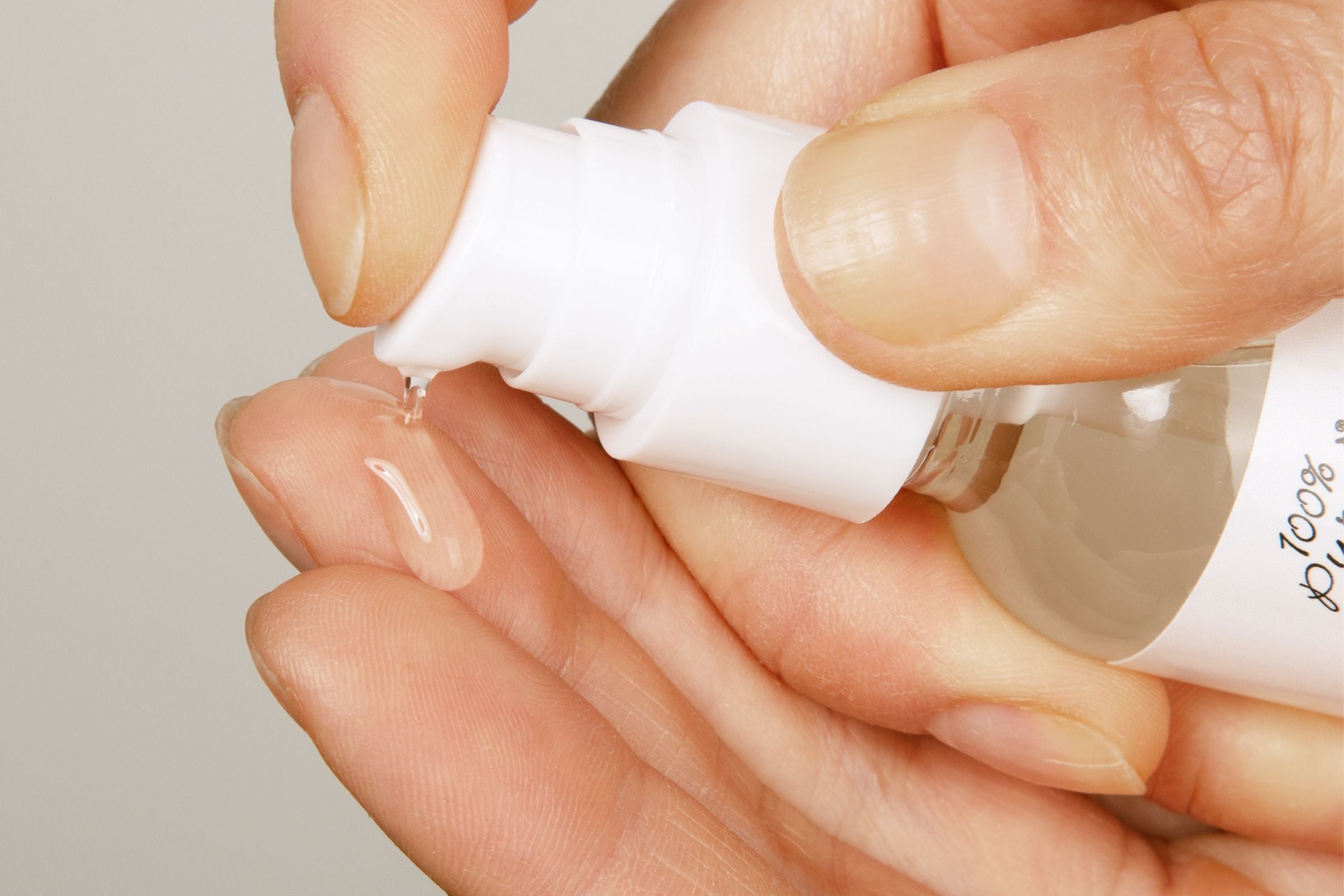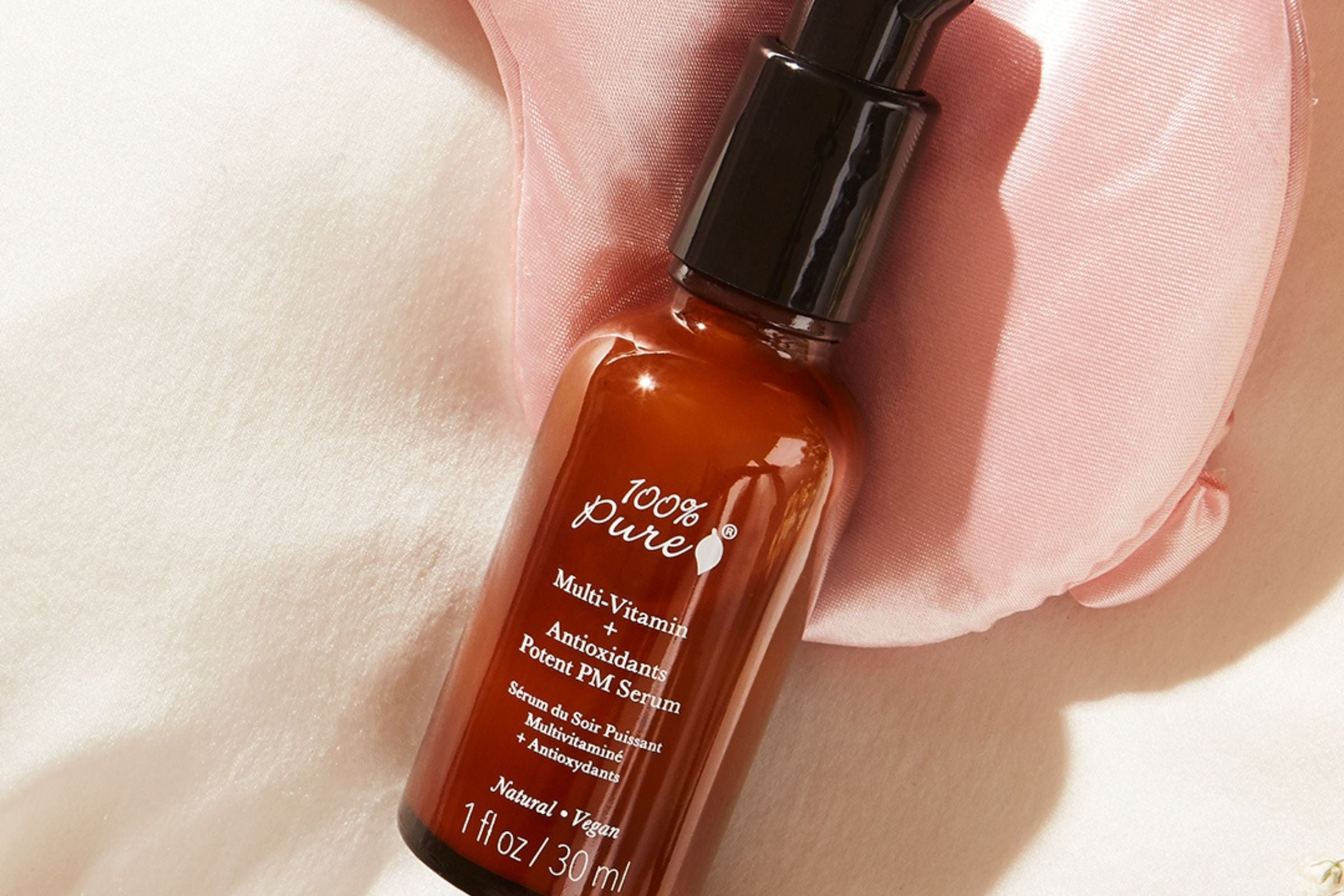Looking back on our skincare journey over the past few years, our beauty essentials have gone through a major hiatus, and hyaluronic acid has become a permanent VIP in our beauty routines. Only a select few modern ingredients have earned a long-standing place in our daily rituals – remember the argan oil hype of the early 2010s? Yes, not everyone made the cut. However, some changes have stood the test of time, reshaping our entire approach to skincare.
The rise of hyaluronic acid has revolutionized skincare worldwide, yet many people still Google questions like “What is hyaluronic acid?” and “How to use hyaluronic acid for skin?” With the beauty world buzzing about techniques like slugging, it seems a revamp of this classic skincare product is overdue. As we’re all constantly upping our skincare game, there are still many who could use a guide to unleashing the transformative power of hyaluronic acid for glowing skin.
What exactly is Hyaluronic Acid?
The name hyaluronic acid is a bit misleading as to how hyaluronic acid is used. Hyaluronic acid sounds like a chemical exfoliant that promises to deliver brighter, toned skin. when in fact, it’s really more hygroscopic than anything else.
For those who have never heard of this ingredient or haven’t had the chance to try it, hyaluronic acid is a natural substance in the human body. It plays a key role in keeping the skin hydrated and the joints lubricated. Often referred to as a “moisture magnet”, hyaluronic acid has the remarkable ability to retain 1000 times its weight in water, making it an excellent moisturizing agent. In skin care, it is synthetically produced and used for its unparalleled moisturizing properties.
Acting as a humectant, hyaluronic acid draws and holds water on the surface of the skin, providing a firm and youthful appearance. Beyond skin care, it is also used in medical procedures such as dermal fillers to enhance facial volume. Embraced for its versatility, hyaluronic acid continues to be a cornerstone in promoting skin health and vitality.

How to use Hyaluronic Acid
We have discussed the versatile uses of hyaluronic acid as a humectant in various moisturizers and serums. Many may unknowingly incorporate this into their routine, stressing the importance of understanding product types. For optimal use, let’s delve into how to maximize the benefits of hyaluronic acid.
This powerful ingredient thrives in subsequent skin care steps, such as toner, serum or moisturizer, rather than cleansers, which primarily resurface the skin. Hyaluronic acid’s ability lies in enhancing hydration, improving skin texture and ensuring sustained moisture. Unlike photosensitive retinoids or clarifying AHAs, hyaluronic acid is suitable for all skin types, offering daily application benefits for both morning and evening routines.
Benefits of hyaluronic acid
Hyaluronic acid seems to suit everyone perfectly. Not only does it offer essential skin care benefits that most of us are looking for, but it also simplifies our skin care routine effortlessly. Some of the most valuable benefits that hyaluronic acid offers include:
- Deep skin hydration resulting in glowing, firm skin
- Acts as a humectant to maintain hydration
- Improving skin texture by supporting collagen and elastin in the skin
- Improves skin tone to boost clarity by helping to repair skin cells
- Soothes skin inflammation to reduce redness and reactivity SUBMISSION
Newsletter Sign up
For more blog updates and exclusive discounts

Who should use hyaluronic acid and why?
Hyaluronic acid offers benefits even for skin types that don’t normally seek out moisturizers. Let’s break down how to use hyaluronic acid based on skin type and the benefits it brings to each of us:
• Ripe | Deeply hydrates and reduces the appearance of texture.
• Dry | Offers deeper hydration that lasts.
• Sensitive | Gently improves skin texture and tone.
• Normal | Helps in elastic, shiny, hydrated skin.
• Acneic | It has an effect on hydration and softness, improving the texture and helping to restore the skin.
• Combination | Provides and maintains moisture where needed, improving skin balance.
• Oily | Light and hydrating, beneficial for maintaining smooth, clear skin.
How to build a skincare routine with hyaluronic acid
Now that we’re all on the same page about hyaluronic acid and its functions, how can we seamlessly incorporate it into our skin care routine?
Understanding the science of product combination is key to achieving our skincare goals (or preventing problems). It is important to have a good understanding of what our ingredients do, allowing us to combine them effectively and maximize their benefits. Since hyaluronic acid is water-based, it harmonizes well with other water-based ingredients and those that deliver similar results such as radiance, calmness or smoothing. Let’s start by outlining our skincare goals, then dive into the combinations that lay the foundation for great skincare routines.
If our goal is overall glow…
Use hyaluronic acid + AHA. This is similar to incorporating an enzymatic exfoliant such as lactic acid or citric acid. Enzymes in AHA boost skin cell turnover and brightness. This combination will improve even complexion and skin texture. Try a pair like the 100% PURE Vitamin C mask that contains brightening lactic acid, followed by the soothing rose hyaluronic acid serum.
If our goal is anti-aging or skin restoration…
Use hyaluronic acid + a retinoid. This combination combines skin texture that smoothes fine lines and creates softness at the cellular level. Retinol boosts skin cell turnover to maintain more youthful-looking skin. How to use hyaluronic acid, in this case, is to keep moisture in the skin to maintain that softness and elasticity while keeping the moisture barrier intact. This is also a powerful duo for reducing acne or breakouts. Layering a hyaluronic acid serum under Retinol Restorative Overnight Balm before bed can create dreamy skin that we can maintain when we’re awake. Be sure to continue with consistent SPF use.
If our goal is to improves skin hydration and reduces acne…
Use hyaluronic acid + niacinamide. A great combination for this is Niacinamide Boost, which works as a serum, followed by a moisturizer that contains hyaluronic acid. The reason this combination is so iconic is that niacinamide works to rebuild the skin which reduces environmental damage. Using this with a deep hydration and barrier protection ingredient like hyaluronic acid means we can better maintain skin health and beauty.
Looking for more products that contain hyaluronic acid? Try these:
Frequently Asked Questions about Hyaluronic Acid
How can hyaluronic acid benefit different skin types?
Hyaluronic acid benefits all skin types by hydrating and retaining moisture. For dry skin it soothes dryness, while for oily skin it hydrates without clogging pores. It plumps and smoothes wrinkles on aging skin and strengthens the overall complexion for various skin types.
How should hyaluronic acid be incorporated into a daily skin care routine?
Apply hyaluronic after cleansing and before heavier products. Use morning and night for optimal hydration. Follow up with a moisturizer to seal in hydration and protect the skin barrier.
Can hyaluronic acid be combined with other skin care ingredients for enhanced benefits?
Yes, hyaluronic acid combines well with various ingredients. Vitamin C boosts collagen synthesis, while peptides and retinol complement its antiaging effects. Combine it with niacinamide to boost hydration and soothe irritated skin.
Are there any side effects or precautions when using hyaluronic acid?
Hyaluronic acid is generally safe, but patch test to rule out allergies. Excessive use may cause skin sensitivity. If applying a concentrated form, follow with a moisturizer to avoid dryness or irritation.
How do seasonal changes affect the effectiveness of hyaluronic acid in skin care?
Seasonal variations can affect the effectiveness of hyaluronic acid. In dry, cold climates, it may require additional moisturizing layers, while in humid conditions, it can be used alone for adequate hydration. Adjust the routine based on the climate and individual skin needs.
